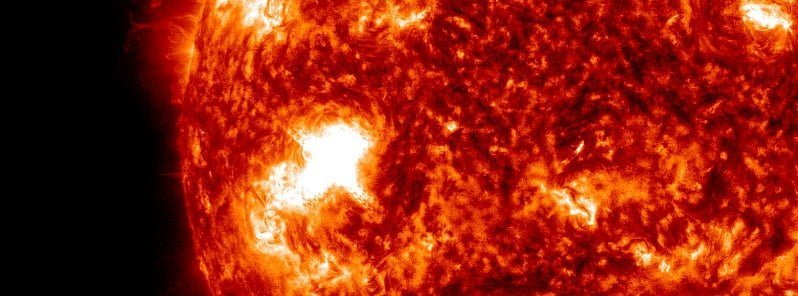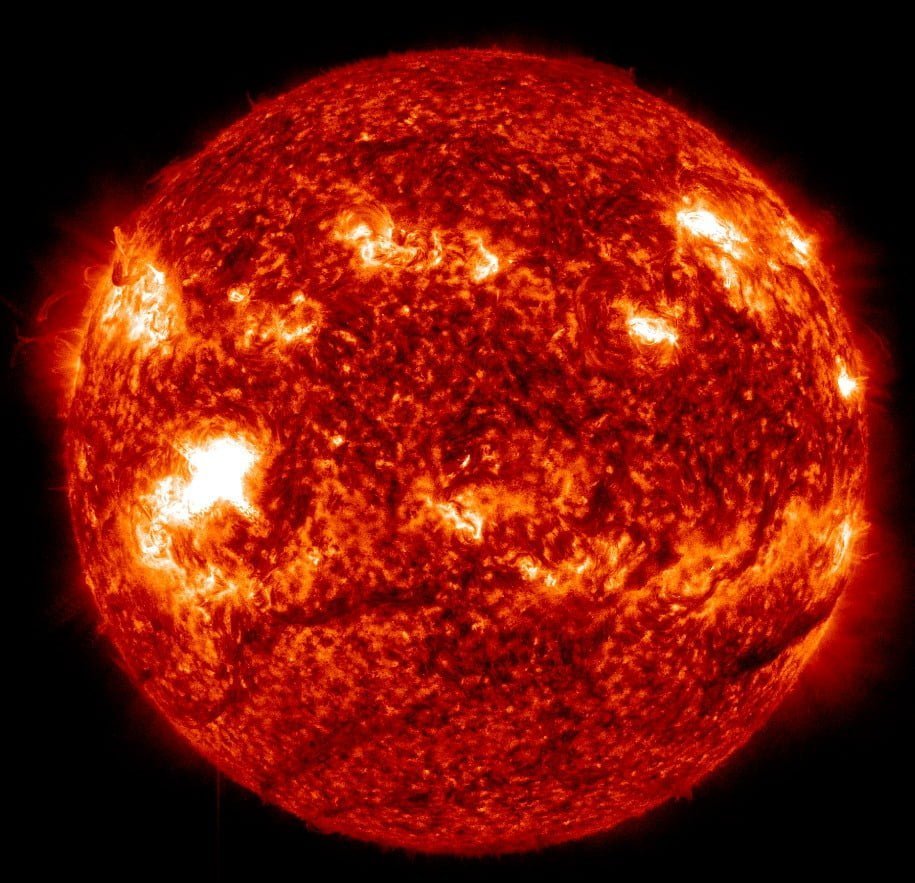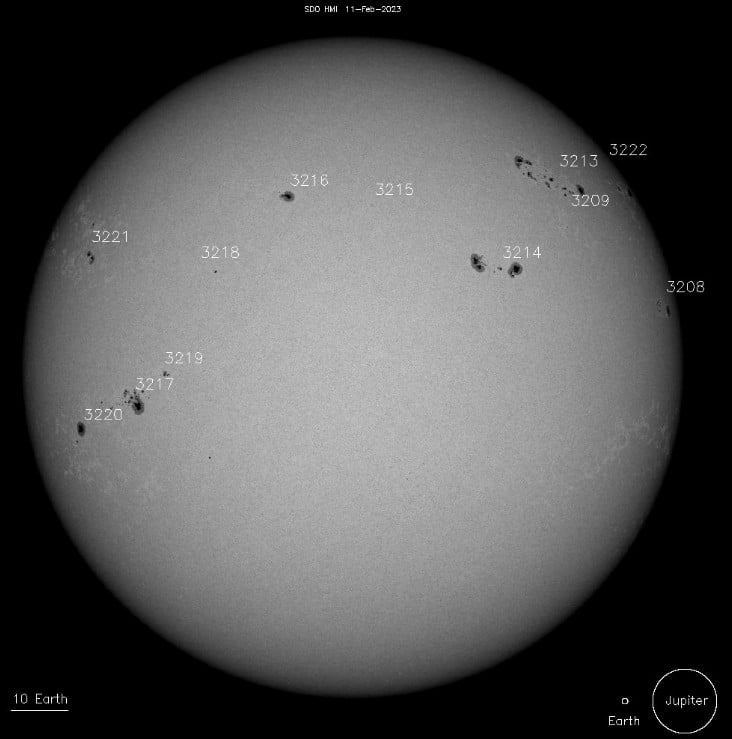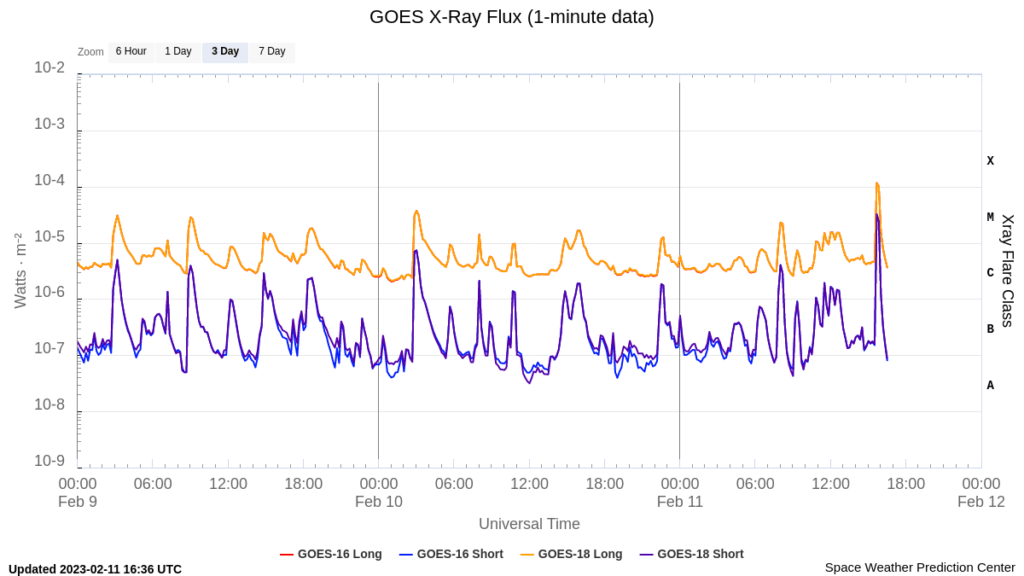Major X1.1 solar flare erupts from AR 3217

An impulsive solar flare measuring X1.1 erupted from Region 3217 at 15:48 UTC on February 11, 2023. The event started at 15:40 and ended at 15:54 UTC.
There were no radio signatures suggesting a coronal mass ejection (CME) was produced. Even if it was, the location of this region, in the southeast quadrant, does not favor Earth-directed CME.
This will change, however, in the days ahead as the region rotates toward the center of the solar disk.
Radio frequencies were forecast to be most degraded over South America at the time of the flare.




Region 3217 region continued growing over the past 24 hours. It has a ‘beta-gamma-delta’ magnetic configuration, making it capable of producing more strong to major solar flares.
Solar activity was at high levels in 24 hours to 18:00 UTC today, with numerous C-class and N M-class solar flares:
- M1.1 at 14:55 UTC on February 10 from AR 3213
- M1.6 at 16:00 UTC on February 10 from AR 3220
- M1.2 at 22:41 UTC on February 10 from AR 3220
- M2.2 at 08:08 UTC on February 11 from AR 3208
- M1.0 at 10:58 UTC on February 11 from AR 3220
- M1.3 at 11:34 UTC on February 11 from AR 3222
- M1.5 at 12:09 UTC on February 11 from AR 3217
- M1.1 at 12:23 UTC on February 11 from AR 3217
- M1.5 at 12:40 UTC on February 11 from AR 3208


3208 – Beta
3209 – Beta
3213 – Beta-Gamma
3214 – Beta
3215 – Alpha
3216 – Alpha
3217 – Beta-Gamma-Delta
3218 – Beta
3219 – Beta
3220 – Beta
3221 – Alpha
3222 – Beta


Additional activity included a filament eruption centered near S22W34. This event was visible in SDO/AIA 304 and H-alpha imagery beginning at around 07:30 UTC on February 10. Subsequent imagery indicated a CME signature to the SW.
Analysis and modeling of the event suggested most of the ejecta would pass south of Earth, but a glancing blow is possible around February 15.
Featured image credit: SDO/AIA 304, Helioviewer, The Watchers


Commenting rules and guidelines
We value the thoughts and opinions of our readers and welcome healthy discussions on our website. In order to maintain a respectful and positive community, we ask that all commenters follow these rules:
We reserve the right to remove any comments that violate these rules. By commenting on our website, you agree to abide by these guidelines. Thank you for helping to create a positive and welcoming environment for all.